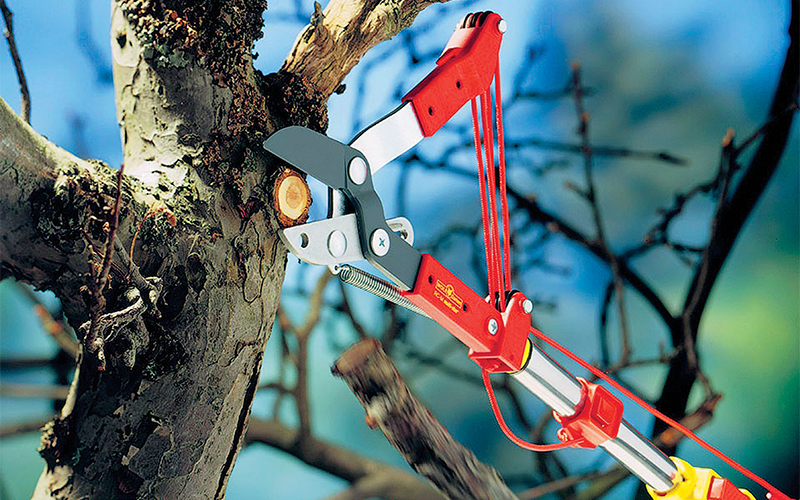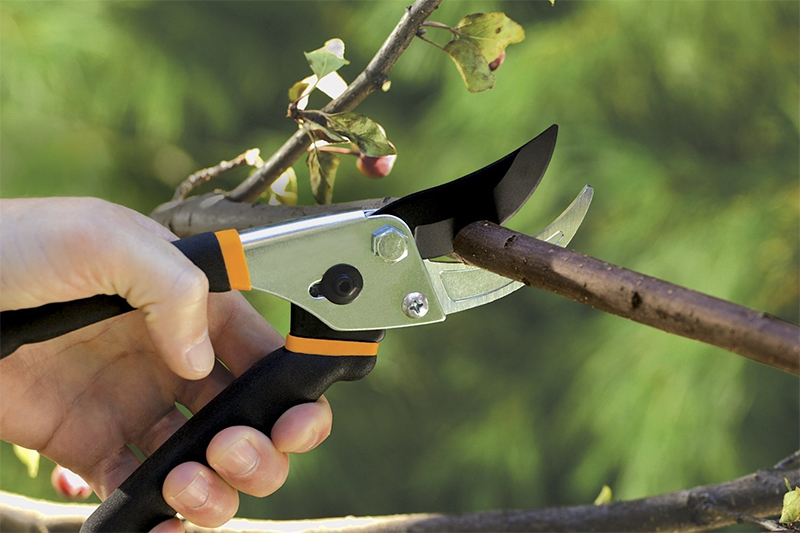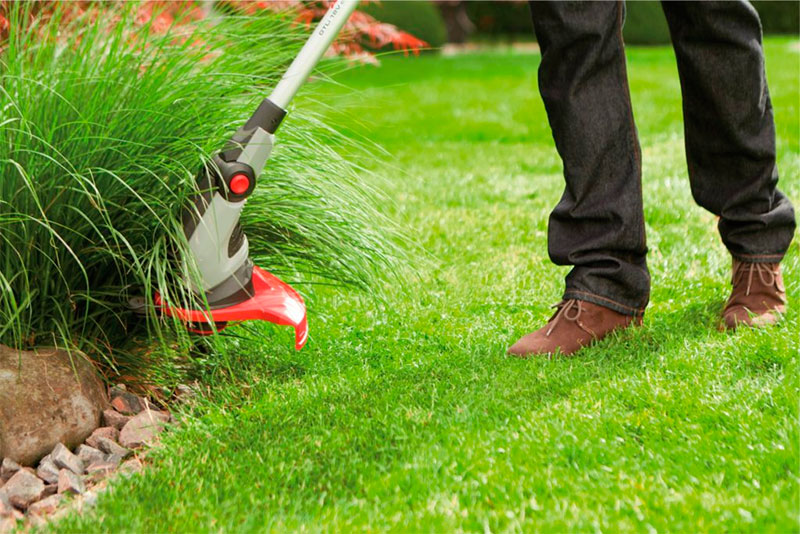Garden pruner is a hand tool, both externally and on the basis of its work, resembling large scissors. Here are just a lot of types of such equipment: some are designed exclusively for cutting flowers and young shoots, others deal with thicker branches better than a hand saw. An inexperienced summer resident is hard to understand all the intricacies. So for those who are just planning to improve their site, it will be useful to know what types of pruners are used for various works, and how to choose the right tool for yourself.

Content:
The best manufacturers of garden pruners - which company to choose
The pruner is a simple tool, but if you buy cheap, low-quality inventory, it will either break without coping with another strong knot, or it will wet the branches, instead of making a quick and neat cut. In any case, the result is the same - you go to the store for a new shears.
In order not to run into another useless tool, it is better to turn to models of reliable manufacturers:
- Fiskars;
- Centrotool;
- Wolf Garten;
- Palisad;
- Raco.
These companies produce excellent tools from high-quality alloys and always carefully work through its design, taking care not only about reliability, but also about ergonomics. It was their models that fell into ours. Top Secateurs rating.
Each gardener has his own requirements for working inventory, so today we will understand what kind of secateurs are suitable for solving your problems.
The principle of operation and the device garden pruner

A standard mechanical pruner is just one type of scissors, only very powerful and with thick blades.
So that he could work with big knots and branches, the design of “two rings, two ends” with riveting in the middle had to be seriously improved:
1. The upper blade (working) - comes with a mandatory fine grinding and high-quality sharpening.
2. Lower blade (support) - made of thick forged steel. In professional models, it can have a drip pan and is often made replaceable.
3. The adjusting bolt - connects two cutting blades. With it, you have to adjust the convergence of the blades, achieving optimal cutting force, but without excessive friction. Only then the pruner will last a really long time.
From the side of the handles (by the way, also very thick and forged) are located spring damper and retainer. The first will protect your hands from injury when working with strong branches, the second will ensure safe storage of the cutting tool in the closed position.
Types of garden pruners
Bypass (contact)

They are used for cutting hard stems and branches up to 2 cm thick. Both blades here are sickle-shaped, but only the upper one is sharpened (the lower one serves as an emphasis).
After forming the plants bypass pruners, there is always a clean and even cut, without damaging the rest of the shoot. The total length of hand tools usually does not exceed 20-25 cm, of which 5-8 cm falls on knives. The weight of the contact pruner can reach 200-250 g.
Pros:
- Accurate pruning of hard shoots and dry stems without deformation and splitting;
- The crescent shape of the blades prevents the branches from slipping out from under the knife;
- Often equipped with ratchet or power mechanisms that allow you to easily cope with thick stems.
Minuses:
- Requires proper positioning of the tool during trimming;
- Because of one-sided sharpening, left-handers will find it harder to adjust.
Pruning shears (brush cutters)

Such equipment is suitable for trimming bushes and tree branches about 3 cm thick. These are planar pruners that have more similarities with classical scissors: they have a pair of symmetrical blades with double-sided sharpening and long handles (20-40 cm), working as levers.
Thanks to them, you can easily cut the average thickness of the stems without any additional amplifiers. Pruning shears for coniferous and old woody bushes can also have wavy or zigzag edges.
Pros:
- Simple and reliable design;
- Due to the long blades quickly cope with a large amount of work;
- Can cut large branches from shrubs and low trees;
- Large selection of sizes of cutting blades;
- Do not require much effort;
- Allow pruning of plants in any direction.
Minuses:
- It is difficult to keep on weight;
- You have to work with both hands.
Loppers

These are hybrids of the previous two types of secateurs. Loppers have the same long handles as garden scissors, and short but thick sickle-shaped blades no longer than 10 cm long. They belong to planar models, that is, here both canvases are well sharpened and move towards each other.
The design is often supplemented with amplifiers or ratchet gearboxes, which allows the delimbers to cope even with very thick branches up to 5-6 cm.
Such a tool is designed for pruning trees, but it is often chosen for working with younger and undersized plants - all because with the two-handed shears do not have to bend down too much. Many loppers have telescopic handles, adjustable in length within 30-200 cm. But the weight of these models is rather big - from 1.5 to 3 kg.
Pros:
- High-quality cut;
- Powerful, easy to handle even pruning of old trees;
- Convenient to work with low and thorny shrubs;
- Models with telescopic handles can be adjusted in length.
Minuses:
- Cumbersome;
- Very heavy.
Vaccination

These are garden secateurs with a very narrow scope and an immaculately clean cut, performed in the shape of a Latin letter V or a semicircle. The diameter of the scion and stock, which a particular model can handle, depends on the type of knives used and ranges from 4 to 12 mm. In length, grafting secateurs rarely exceed 20 cm and weigh up to 250 g.
Pros:
- Perfectly precise vaccination cuts are made;
- Do not deform young shoots;
- As easy to use as regular pruners;
- Do not require much effort.
Minuses:
- Narrow specialization";
- High price.
Garden pruning options

Manufacturing materials
One of the most important criteria for choosing a garden pruner is the metal from which its blades are made. The budget tool is made from ordinary steel without any coating, which quickly becomes dull and rust.
Good inventory is made from alloys of the following brands:
1. 65Х13 - the knife steel differing in really high corrosion resistance. Often found in secateurs of domestic production.
2. SK-5 is a high carbon tool steel used by Asian firms. Appreciated for not requiring frequent sharpening.
3. 440A - possesses the maximum resistance to corrosion and at the same time excellent indicators of strength.
4. AUS-6 - Japanese analogue of the previous brand with increased wear resistance.
5. Titanium is very light and durable, it is absolutely not susceptible to rust, but the cost of such a tool will be rather big.
As for the arms, they are also made of metal, but you should be interested in the material of the braid. This may be the most common cheap plastic or more durable reinforced polyamide.
The main thing is that the handles have non-slip rubber inserts, otherwise you will constantly drop the tool or you will not be able to intercept it comfortably.
Mechanism
From the mechanism installed on the secator, it depends on which branches it will be able to cope with, and what efforts will be required from this for you.
1. Scissors
The simplest and least efficient is the scissor mechanism: it transfers to the blades only the load that you are able to apply to the handles of the tool. Accordingly, such a pruner can be used exclusively for pruning young and thin shoots. The only thing that somehow facilitates the work is the increased length of the handles themselves, which work according to the principle of a lever.
2. Leverage
Virtually no different from scissor, only in this case, the pruning handles are parallel to each other. Longer lengths, as well as gain in strength, cannot be achieved here, so the tool can still cut extremely thin stems. But the load on the hands will become less noticeable, because you will simultaneously squeeze the handles with all your fingers.
3. Ratchet
The ratchet mechanism itself is a gear wheel with a stopper that can rotate only in one direction. Such a device allows you to "snack" a thick branch in several stages. When first pressed, the blades cut through the stalk just as much as the force existed. But with each subsequent movement of the knobs, the knives slam deeper and deeper until they do their job. Ratchet mechanism is often found on powerful secateurs like loppers and professional tools.
4. Power drive
Independently increases the force applied to the handles, which makes it possible to cut very thick and rigid branches without much difficulty. The presence of such a mechanism makes the tool heavier and increases the cost of the pruner, but you will not find anything more effective than it - unless you buy a power saw.
Springs
The operation of the pruning spring determines how quickly its handles will return to their original (open) position.
Modern models are equipped with three types of springs:
1. Wire - the weakest and short-lived, have a short stroke;
2. Spiral (lever) - very tight, but perfectly adjustable;
3. Belt - are considered the most reliable, but during work is constantly clogged with small debris.
Which garden pruner to choose

1. The most simple planar shears made of carbon steel (better - with anti-corrosion coating) will be enough for the growers. Spring type does not matter, so you can get by with the cheapest wire. An exception will have to be made only to those who plant roses. For trimming thick stems, you will need another one — a bypass pruner with an additional holder, so as not to grasp the prickly legs with your hands.
2. The contact bypass pruner with thick and durable blades will also be needed by those who take care of bushes. For trimming young shoots of grapes or hedges, a brush cutter with a scissor or lever mechanism is suitable; dense branches of two to three years old may require a ratchet.
3. Pruning trees and old dry stalks in the garden will have to be done with a ratchet delimbing mechanism or even a power drive. It is desirable that the tool had a long or sliding telescopic handles - then you can get to any branches. Pay special attention to the material of the blades: suitable high-strength steel 440A or its equivalent, as well as titanium, if you have enough money for such a purchase.
4. For grafting fruit trees, it makes sense to purchase a specially designed for this pruner. It will be necessary to use it infrequently, so knife steel is quite suitable as a base material (the presence of a protective coating on the blades is welcome, but not mandatory).
How much is a garden pruner

1. A conventional bypass pruner will cost from 100 to 4800 rubles, depending on the materials used and the country of origin.
2. A model with a scissor mechanism can be purchased at prices ranging from 140 to 2,900 rubles.
3. A good lopper on long handles will cost from 400 to 4.5 thousand rubles.
4. The graft pruner will pull in the amount of 2.5-5 thousand.
It will be interesting to friends too










